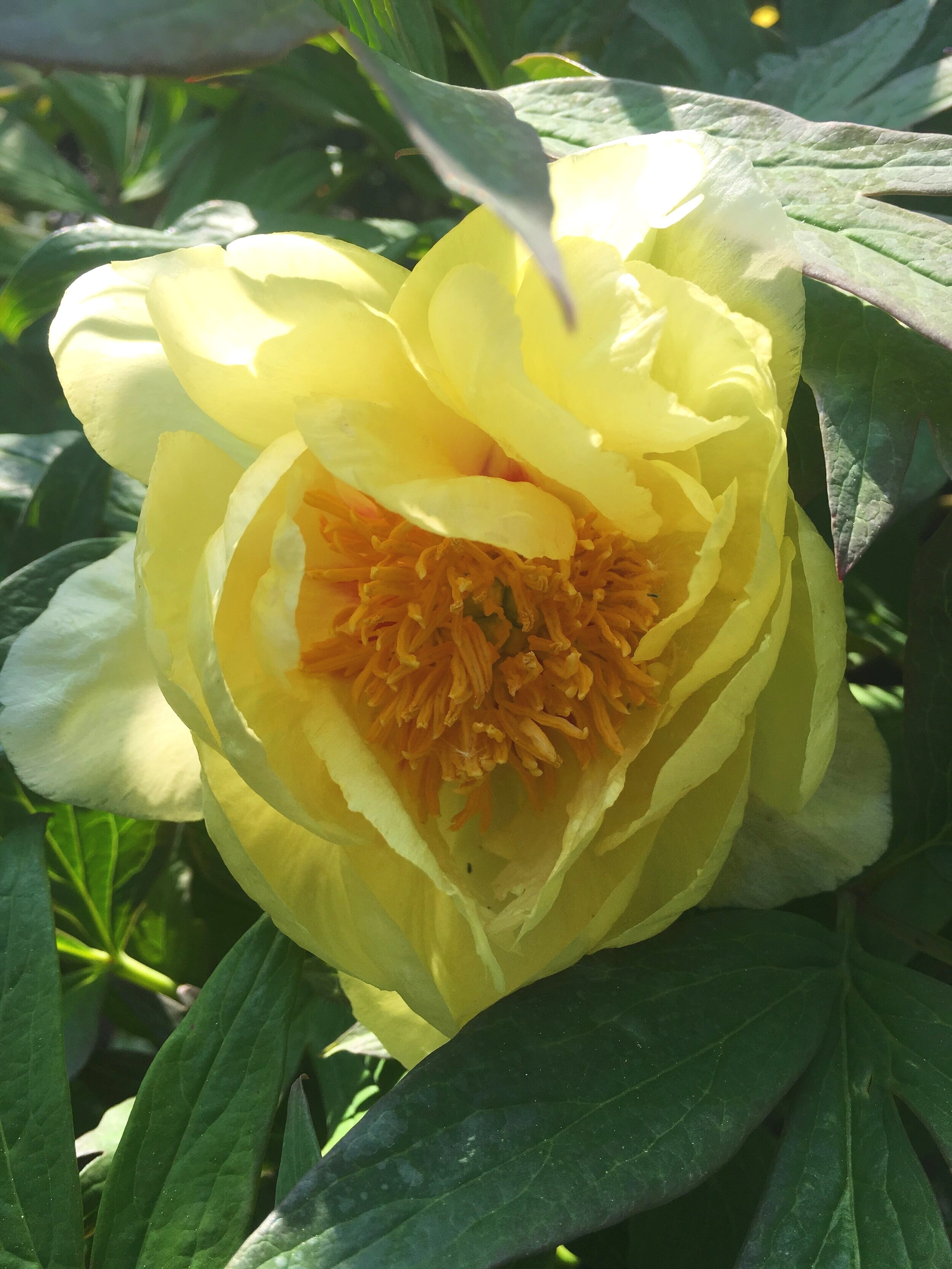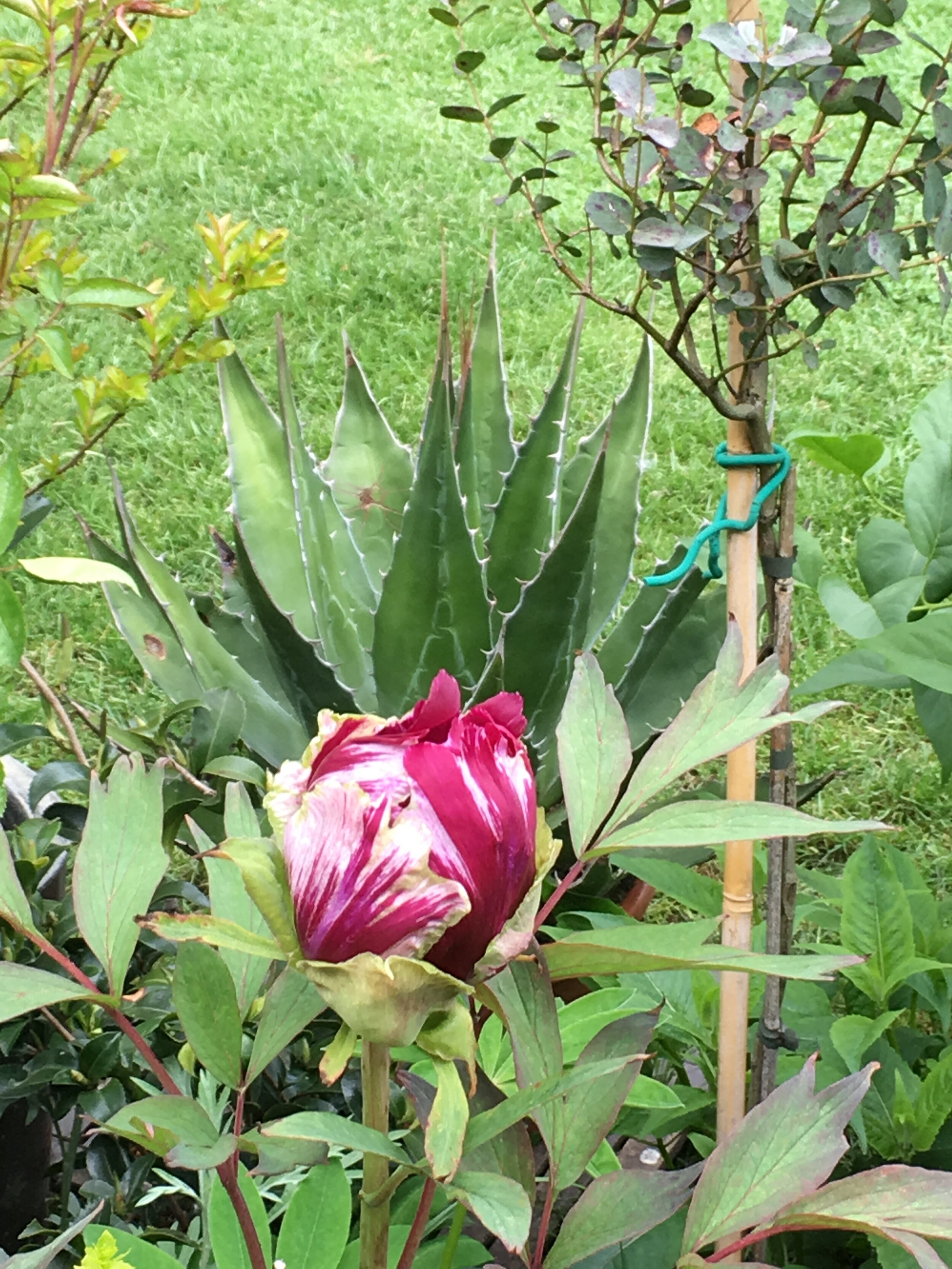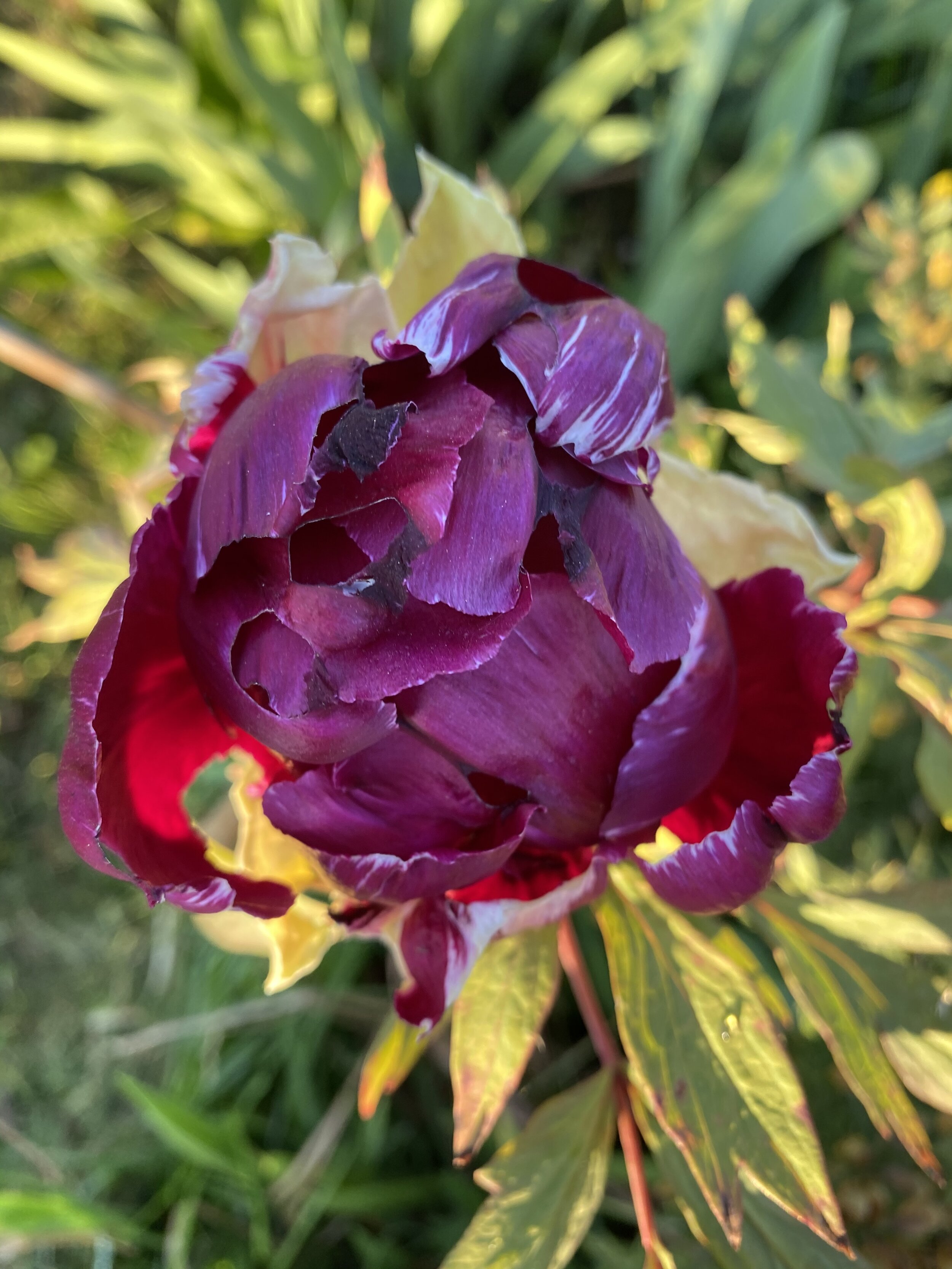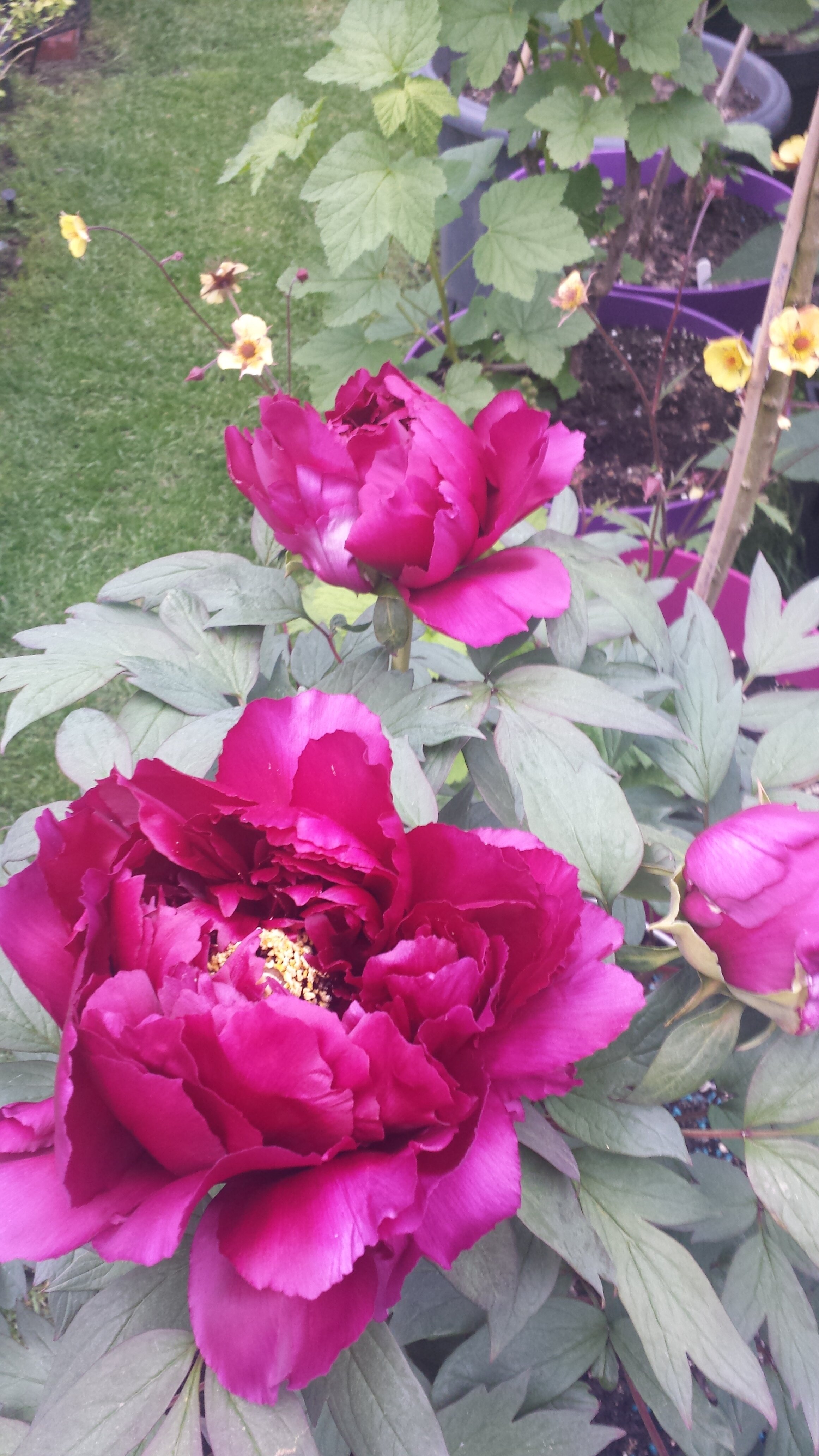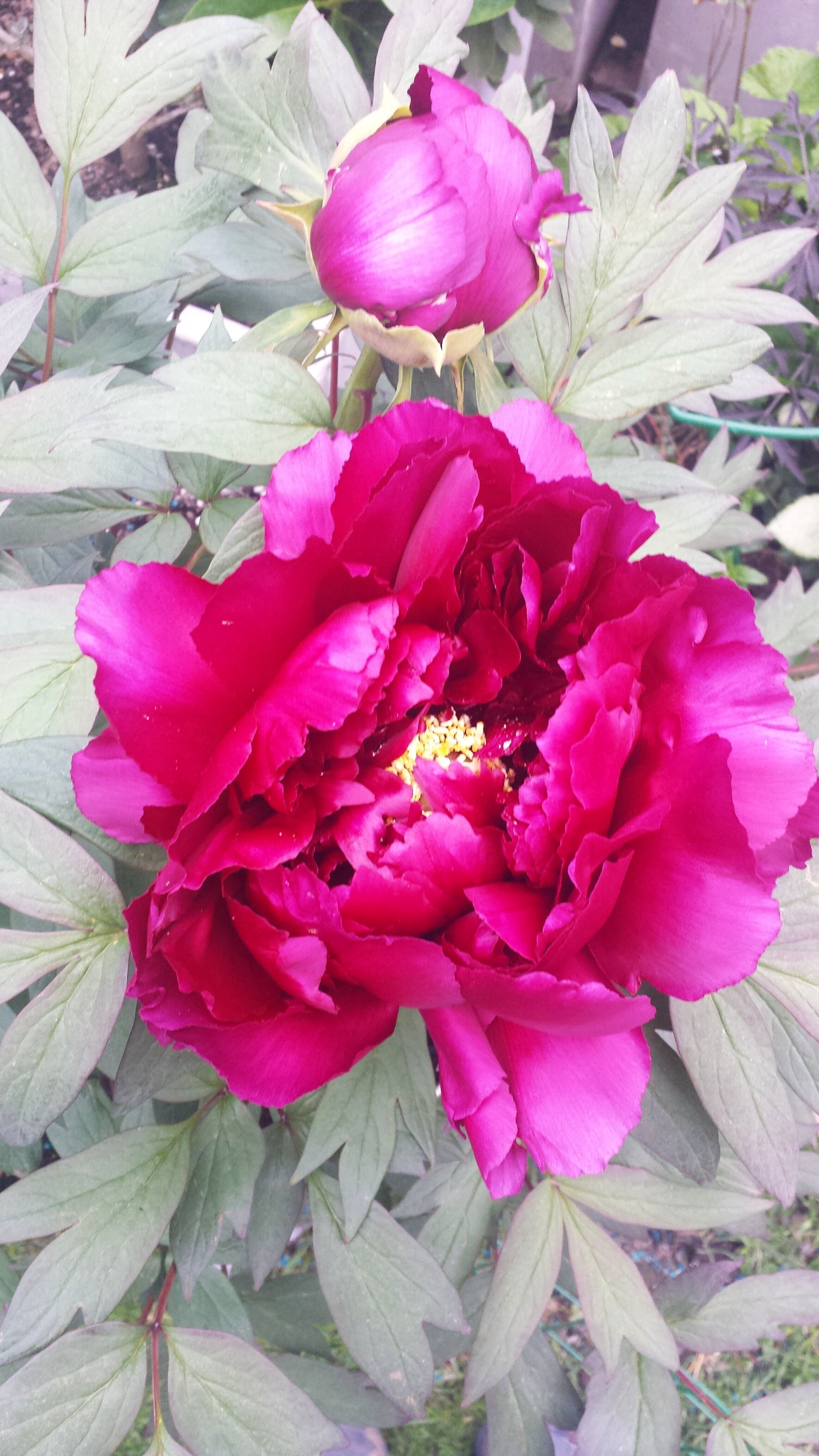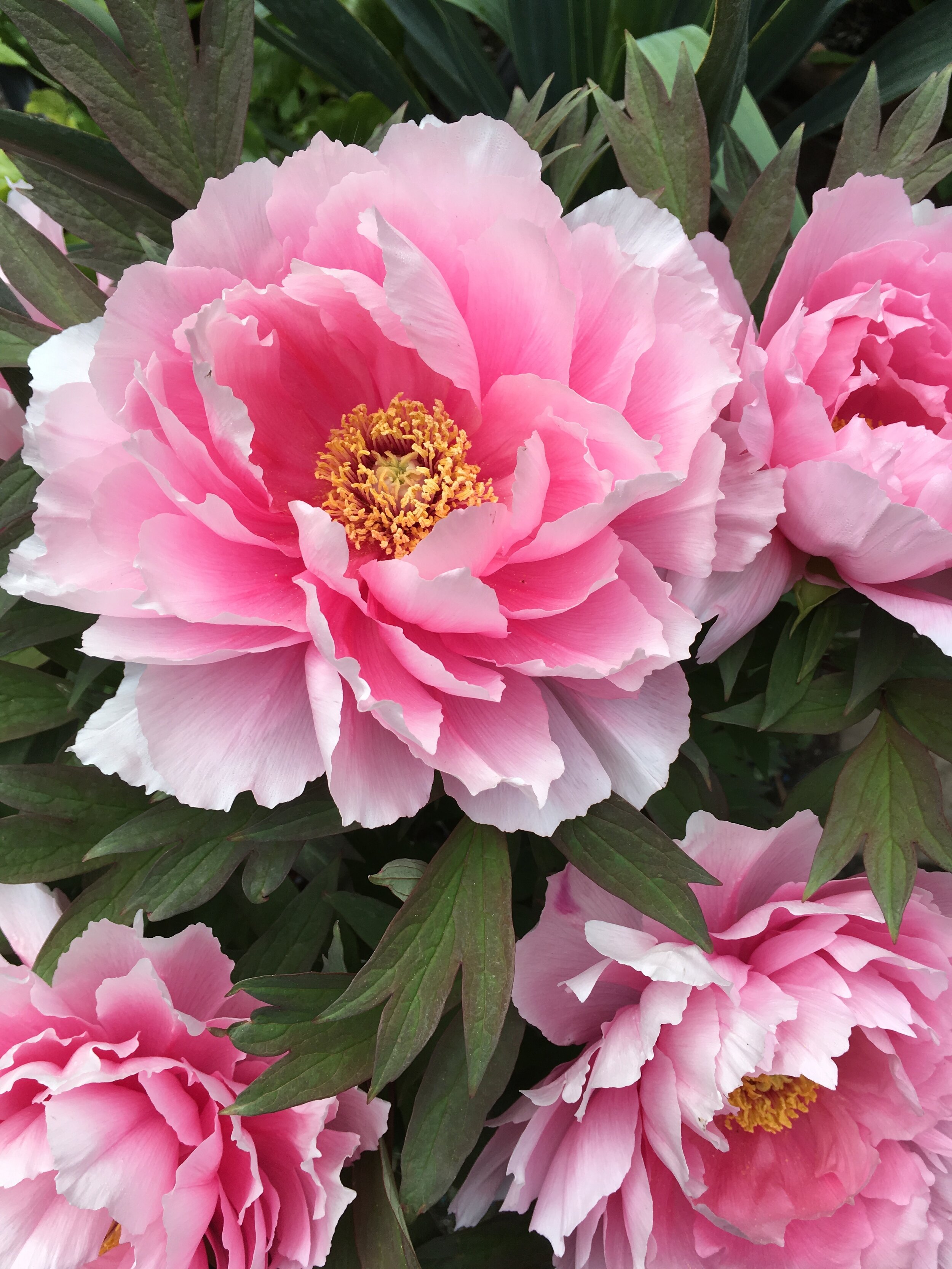Spring peony JOY
Hoorah!
Paeonia delavayi, my first peony of the season …
Whether you call them peonies, paeonies, or paeonias, if you know what they are I’m sure most of you will agree that these flowers are pretty special. Lush and large – up to 15cm in diameter. Blossoms may be simple and single or double and pouffey, but always very showy, and available in an ever-increasing variety of colours, including variegated. Breeding programme have been successful in producing new cultivars.
As if their form was not spectacular enough, peonies are often scented. extracted from fragrant peonies are used in perfumes. Like roses, peonies are loved by gardeners and florists alike. Great for wedding bouquets. Peony leaves are often quite pretty too, much-divided, and range in colour from dark green, to grey-green to dusky and purple-tinged. They hold their own in the border when blooming is over.
To me peony flowers are regal, sophisticated, and strong, yet frothy and fun at the same time. They hold a special place in my heart and I look forward to their arrival each year. Hoorah! I’m pleased to say that the peony flowering season has begun in the UK, or should I say my peony season certainly has – and with a bang!
Peony plants generally have a short flowering season of a week or two in spring or summer. What I’ve done is maximise the season by having early-, mid-, and late-season flowering paeony plants - sixteen in all. This means that I usually have at least one peony plant in flower from April until about the end of July.
Five of my peony plants are in bloom as I write.
First came Paeonia delavayi with it’s wine red flowers held downwards in early April …
My red-flowered Paeonia delavayi again
Followed by four more two weeks later …
There are at least 33 species of peony, which may be either woody or herbaceous perennials. There are also numerous hybrids.
For all their intricate beauty and largesse, paeonies are relatively low maintenance, if planted correctly. By correctly, I mean that they should not be planted deeply. Most peonies for sale in the UK are grafted on to vigorous (usually herbaceous) root stock. All you need to do is ensure that the graft is planted at soil level. Too deep, and flowering may be impacted. If the grafted is overly exposed, the rootstock may sprout shoots, which, if unchecked may overwhelm the grafted paeony variety that you bought. Peonies grow well in full sun or partial shade, in well-drained soil or soil-based compost for container growing. They do like it on the drier side of life, and only require fertilisation with slow-release fertiliser such as bonemeal once a year, after flowering.
I recently learned that peony seeds take up to two years to germinate. Budding and grafting is the main method of propagation in horticulture, except in breeding programmes.
Peonies, then and now
The peony features in Greek mythology. One of a number of beliefs associated with the origin of the plant has it that the peony is named after Paeon, a physician to the gods. Paeon received the flower on Mount Olympus from the mother of Apollo.
The peony is called mudan (牡丹) in Chinese. It is an important symbol in Chinese culture, where it has been known and grown for millenia, and is called the ‘king of flowers’. It has long featured in works of literature and art, symbolising honour, wealth, aristocracy, beauty , love and affection. According to Chinese folklore, if a peony wilts or dries up, poverty or other problems are close by.
All parts of the peony plant are used for medicinal purposes in China, where it remains an important garden plant. The garden of the Twin Pagoda Monastery at Taiyuan Shanxi Province is said to contain 10 peony plants that are over 300 years old.
The peony is the city the city flower of Luoyang in China, a city that has a long history of growing fine peonies and since 1982, has held an annual peony festival. Another historical Chinese centre of peony culture is the city of HeZe, which today hosts an annual International Peony Fair.
Historically in Europe, monasteries first cultivated peonies for medicinal purposes and as a spice, and later decorative plants. In Hungary and Germany, the peony is commonly called the Pentecost Rose, as it blooms around the time of the Christian Pentecost. Churches are often decorated with the flower. In Europe, the peony is also referred as 'the rose without thorns.'
In North America, peonies are generally grown for decorative purposes. The peony is the state flower of Indiana in the United States, and also the 12th wedding anniversary flower.
There are three distinct groups of peony:
1. The Chinese Tree Peony or Moutan Peony
Tree peonies or those from the section Moutan of the plant genus Paeonia are characterised by having permanent network of woody branches from which herbaceous stems bearing large, serrated green to purple-tinged leaves grow. They are deciduous and can attain a height of 1.2 to 1.8 metres. Many varieties available in the UK have been developed from the Chinese species P. suffruticosa. Tree peony flowering begins in spring. The blossoms may be single or double, and vary in colour from white to lilac, peach and violet to red, and even yellow. Tree peonies require a hot dry summer season for best growth. They need to be sheltered from cold, drying winds.
There are at least 600 Chinese tree peony cultivars in existence. A popular one is Paeonia rockii.
2. The Herbaceous Eurasian Peony
Herbaceous peonies have large, glossy, serrated leaves borne on annual stems produced by fleshy rootstocks, attaining a height of up to 1 metre. In late spring and early summer they produce large single and double flowers of white, pink, rose, and deep crimson colour. The vegetative growth above ground that emerges in early spring, dies back completely in winter. Many gardeners cut herbaceous stems back hard after flowering. I tend to leave them be for a little longer. Cutting them back is meant to help prevent the build up of diseases such as botyritis and the dreaded wilt. They’ll spring into action when the growing season starts again the next year.
A popular herbaceous garden specie is Paeonia lactiflora , which were extremely popular in the Edwardian era in Europe, and are favourites of peony lovers to this day. There are hundreds of varieties of Paeonia lactiflora in cultivation, including the Japanese types with petaloid centres, where the stamens have been replaced by petals. Flowers may be single or double, such as the pink ‘Sarah Bernhardt’. Paeonia lactiflora has provided hundreds of cultivated varieties, including the Japanese types, with one or two rows of petals surrounding a cluster of partially formed petals in the centre (petaloid stamens).
One of my Paeonia lactiflora ‘Jan van Leeuwen’ blooms in 2016. ‘Jan van Leeuwen’ is a herbaceous peony. It isn’t in bloom yet but the buds are swelling nicely for a great show this year.
Another specie, Paeonia officinalis, also called the common peony or garden peony is native to France, Switzerland and Italy, and can still be found in the wild. It has divided leaves and grow 60–70 cm tall. Bowl-shaped deep pink or deep red flowers, 10–13 cm in diameter, are produced in spring.
Paeonia officinalis was first used for medicinal purposes in Eurasia, then later grown as an ornamental. Many selections are now available in horticulture, such as the double, cerise red-flowered ‘Rubra’, though the typical species is uncommon.
I must mention the important and ever-expanding group of peony hybrids!
Paeonia × suffruticosa is a name used for a group of tree peonies that are the result of hybridisation with species exclusively belonging to the subsection Vaginatae. Currently there are about 600 Chinese tree peony cultivars, many of which are hybrids, some between herbaceous and tree peonies.
Lemoine hybrids: Victor Lemoine in Nancy, France crossbred the yellow-flowered Paeonia delavayi with traditional double-flowered Paeonia suffruticosa to introduce the colour yellow into the cultivated semi- and double-flowered tree peonies. These hybrids are known as the Paeonia × lemoinei group, an example being the cultivar ‘High Noon’ (see slideshow above. Mine is blooming now!).
Itoh hybrids: Toichi Itoh from Tokyo, Japan used pollen from ‘Alice Harding’ to fertilize the herbaceous Paeonia lactiflora ‘Katoden’, which resulted in a new category of peonies called the Itoh or intersectional cultivars. These are herbaceous, have leaves like tree peonies, with many large flowers from late spring to early autumn, and good peony wilt resistance.
3. The North American Peony
Two peony species are native to North America, namely the California peony (Paeonia californica) which is found along the Pacific coastal mountains of California and Mexico, and the Western or Brown’s peony (Paeonia browni) which is found from California to Montana. These peonies are not commonly available in the UK.
And finally,
now that my tree peonies have kicked the season off, it will soon be time for my herbaceous and other peonies to bloom. Flower buds are swelling by the day. I’ll post pictures as they arrive on Twitter and Instagram.





